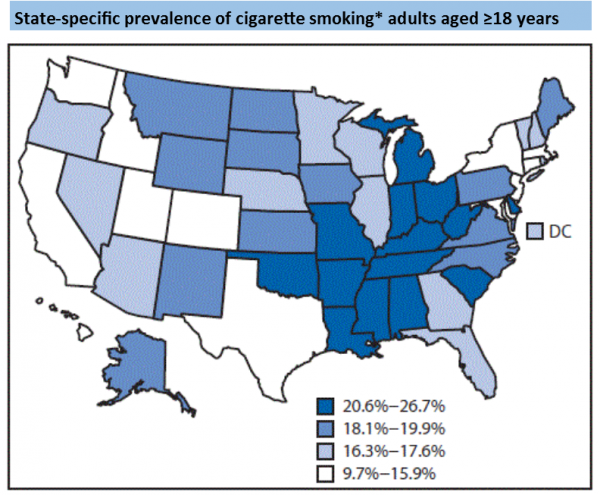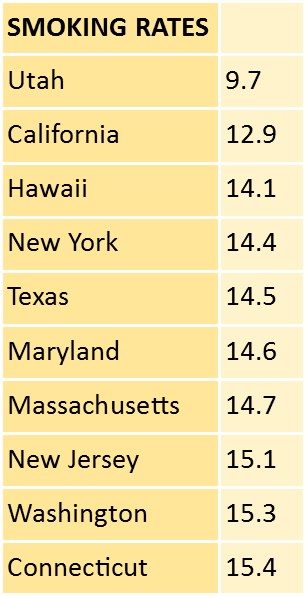CT Has Nation's 10th Lowest Rate of Cigarette Smoking
/West Virginia had the highest prevalence of cigarette use in the United States, according to a new CDC study. Utah had the lowest, and Connecticut had the 10th lowest rate.
Using data from the 2014 Behavioral Risk Factor Surveillance System, CDC determined that the prevalence of cigarette use in West Virginia was 26.7%, while the lowest rate was 9.7% in Utah. In Connecticut the rate of cigarette use was 15.4 percent.
CDC recommended that continued implementation of proven population-based interventions, such as increasing tobacco product prices and enforcing comprehensive smoke-free laws, and increasing access to evidence-based clinical interventions can help reduce tobacco use.
"These findings highlight the importance of enhanced implementation of evidence-based strategies to help smokers and other tobacco users quit completely," CDC said.
Cigarette smoking was significantly higher among males than females in 34 states. Among males, cigarette smoking ranged from 11.2% (Utah) to 27.8% (West Virginia), and among females, from 8.2% (Utah) to 25.6% (West Virginia).
The report also indicated that the prevalence of smokeless tobacco use ranged from 1.4% (Hawaii) to 8.8% (Wyoming). It was 1.8 percent in Connecticut.
 Prevalence of any cigarette and/or smokeless tobacco use ranged from 11.3% (Utah) to 32.2% (West Virginia). Connecticut was 15.3 percent.
Prevalence of any cigarette and/or smokeless tobacco use ranged from 11.3% (Utah) to 32.2% (West Virginia). Connecticut was 15.3 percent.
The CDC also indicated that the prevalence of any cigarette and/or smokeless tobacco use differed significantly by race/ethnicity in 21 states. Prevalence was highest among whites in eight states (Arizona, Delaware, Georgia, Maryland, New York, North Carolina, Texas, and Virginia), followed by adults of non-Hispanic other races in six states (Arkansas, Florida, Kansas, Nebraska, Oklahoma, and South Carolina), blacks in five states (California, Illinois, Indiana, New Jersey, and Wisconsin), and Hispanics in two states (Connecticut and Michigan).
The report was issued last week from the CDC. The report concluded that “continued implementation of proven population-based interventions, including increasing tobacco product prices, implementing and enforcing comprehensive smoke-free laws, warning about the dangers of tobacco use through mass media campaigns, and increasing access to evidence-based clinical interventions (including behavioral counseling and FDA-approved medication), can help reduce tobacco use, particularly in populations with the highest use prevalence.”































